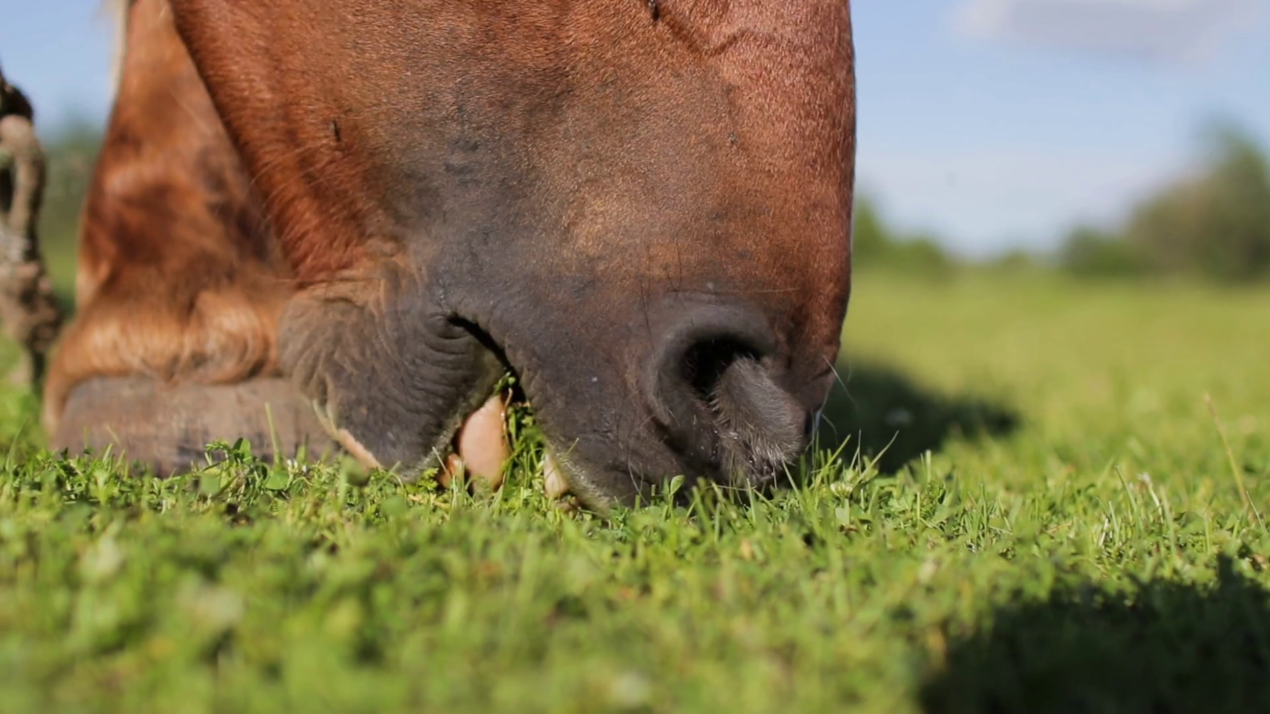The Psychological Need To Chew

The horse has evolved to spend up to 16-18 hours a day grazing on fibre, and is considered to have a physical need to chew. The physical need for forage is to provide bulk, which consequently reduces the risk of digestive issues such as colic and gastric ulcers, helping to maintain a stable pH in the hindgut of the horse and finally to meet a large proportion of the horse’s energy (calorie) intake. However, research has found that this is not just a physical requirement, but is essential for their mental well being too.
The research
In a recent study, 8 stabled mares were offered a diet of either ad-lib hay or a concentrate pellet. Prior to the study, the mares were taught to press a button to obtain a food reward. When fed the concentrate pellet, the mares had a higher motivation to press the panel for a hay reward, indicating that they were more inclined to 'seek' a fibre source when being fed a low fibre diet. In addition, searching behaviours (i.e. sifting through wood shaving bedding for food particles) took up 11.5% of the horse's day when fed pellets, but only 1.2% of the time when fed hay. This of course reflects the horses 'need' to exhibit natural browsing behaviour further.
Forage and stereotypical behaviours
Additional research has looked into the effect of forage and behaviour shown in stabled horses. Horses who were deprived of forage were more likely to display stereotypical behaviours, such as crib biting, wood chewing or weaving. One study also investigated the effect of multiple forage sources in comparison to a single source. The horses fed on the multiple sources were found to browse for much longer, and weaving was only demonstrated in the single forage group. This again suggests a link that the horses desire to mimic natural browsing behaviours is an important aspect of meeting the horses welfare needs.
Increasing fibre intake
It is important that no horse receives less than 1.5%-2% of their body weight in forage on a dry matter basis per day. However, as the research has found, stabled horses who are only offered 1 forage type can show signs of ‘sensory-specific satiety’ where they become ‘fed up’ by one forage type but are still motivated to consume others.
If the horse is fussy or simply does not have the appetite for forage at increased quantities, offering multiple fibre sources can be effective at stimulating appetite and maintaining recommended intakes. Large buckets of chaff, chopped grass or soaked fibres can be placed around the stable can help to increase motivation and appetite, as well as mimicking natural browsing behaviours.
TOP TIP : Horses who are kept in herd environments with supplementary forage may be prone to 'bolting' their forage sources before they are moved on by horses with a higher position in the herd. This can increase the feeling of 'gut fill,' and consequently reduce their appetite and overall intake. Separating these horses or offering multiple forage sources to reduce bullying and increase chew times can help to increase the overall intake per day.
WHICH SARACEN PRODUCTS?
- SUPER FIBRE CUBES are a great way to increase the fibre content of any horse’s ration. The pencils have a low starch and sugar content and are cereal free, making them suitable for good-doers and those prone to laminitis or digestive problems. Soya oil is used within the pencil to help support optimum skin and coat condition. The high fibre content makes Super Fibre Cubes ideal as a partial hay replacer at times when hay is either scarce, expensive or of poor quality. As Super Fibre Cubes are dust-free they are an excellent choice to help maintain normal respiratory health. They can also be easily soaked to form a mash for horses with poor dentition.
- RE-COVERY MASH contains a blend of ’Super-Fibres’, known for their superior digestibility and ability to support the health of the whole digestive tract. To further support digestive health Re-Covery Mash also includes a live yeast to support gut flora and stabilise the pH of the gut. An elevated level of vitamin E is included to protect the horse from free radical damage that occurs as a natural part of aging or during work periods. Re-Covery Mash has been flavoured with an encapsulated banana flavour to entice fussy feeders. Encapsulation means that the flavour is protected and released through the physical process of chewing. Encapsulation is more beneficial than essences and oils as they both tend loose taste and aroma very quickly. Saracen Re-Covery Mash should be soaked before use and will take 2-3 minutes to soak in warm water or 5-10 minutes in cold water.
NEED GUIDANCE?
If you would like any further information, please feel free to contact our nutritional team on 01622 718487 or email info@saracenhorsefeeds.co.uk
Feed Advice Form
Complete our online form to receive a detailed nutritional plan for your horse or pony from one of our registered nutritionists.
Quick Feed Finder
Use our quick and easy feed finder as a guide to select the right feed for your horse or pony.











